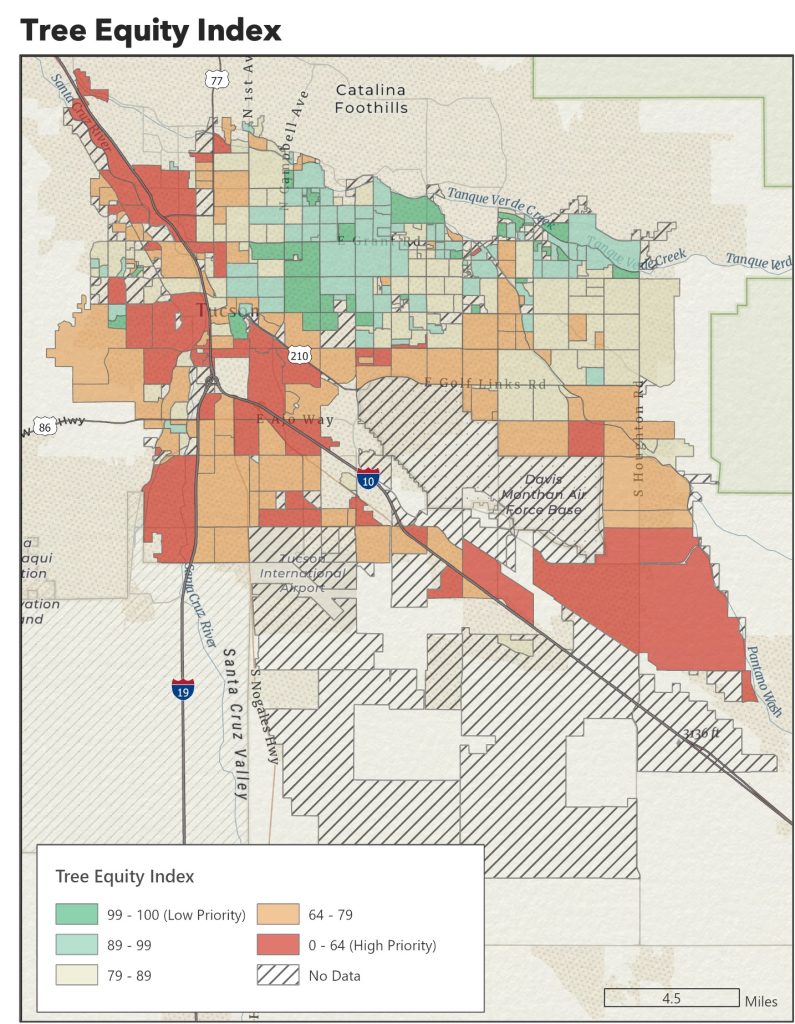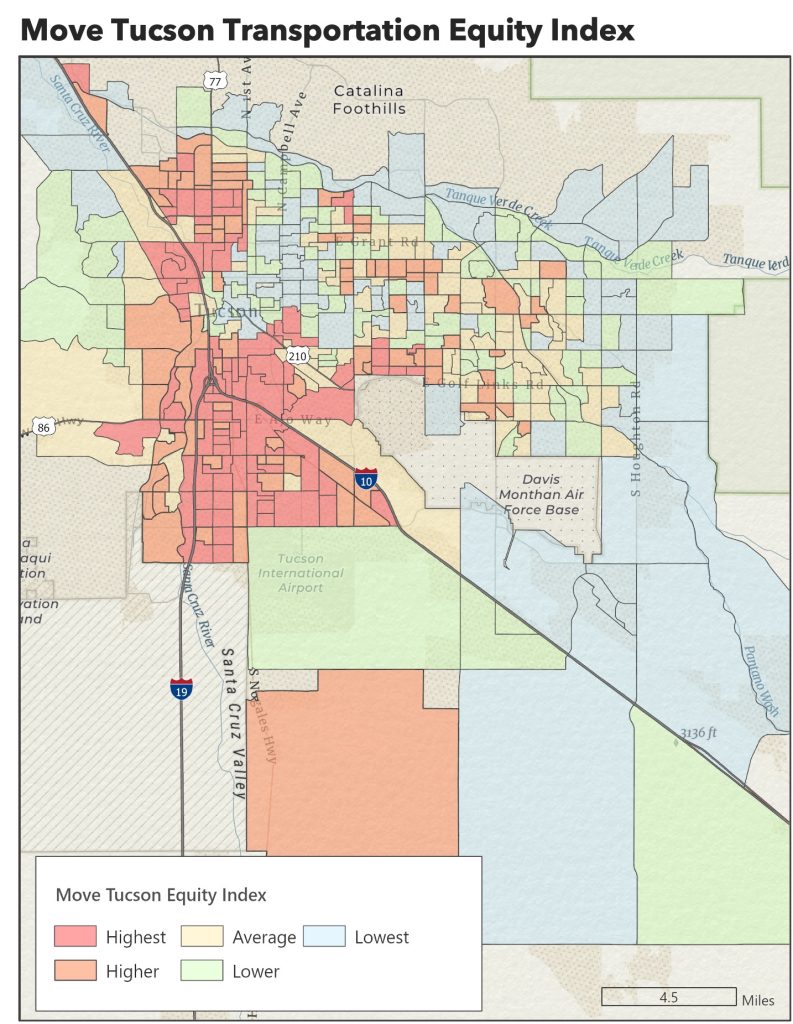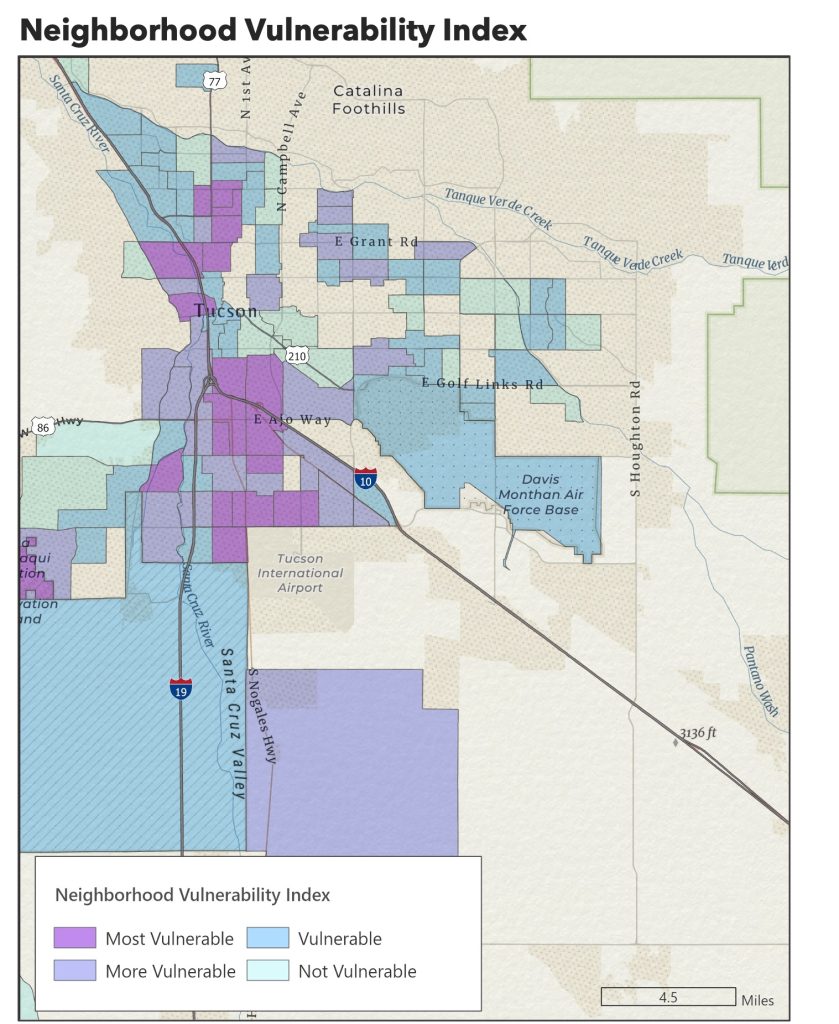When Laurice Walker was recruited as the first chief equity officer at the City of Tucson in 2022, she understood the complexity of the job.
Forty-two percent of the Arizona city’s half a million residents identify as Hispanic. Yet, historic racist covenants and redlining have fueled housing injustice there over the decades, and racial segregation still lingers inside city limits.
Tucson city leadership sought an experienced leader to launch the Office of Equity and examine organizational policies, programs, and practices. The primary goal: ensuring accessible city services for all.
“The Office of Equity being created here is a big milestone,” Walker said. “Tucson has shown that it’s truly dedicated to the work of achieving equity.”
Walker had served in a similar pioneering role in Minnesota. Initiating an equity strategy would require cross-departmental collaboration and deep public engagement. Walker had to make a nuanced and complicated topic — equity — approachable and easy to understand.
Data held the key.
Specifically, the new office needed demographic data about the characteristics of residents (such as age, race, ethnicity, education, and disability status) and data visualization to show where the most vulnerable lived. Six months after taking office, Walker hired Laura Sharp as the equity data manager.
Sharp quickly applied her background as a geographic information system (GIS) analyst to compile data about people and places. Both Walker and Sharp knew they needed a data-driven approach to enact lasting change.
“Equity is a complex field,” Walker said. “Laura has been able to use GIS to articulate data in a way that is very powerful to our policymakers and the community.” Walker stressed that although demographic data is complex, visualizing it on a map simplifies the complexity. People can clearly identify burdened populations.
Identifying and Addressing Disparities
First, Walker and Sharp focused on finding gaps in the availability of city data and resources that could be used for equity purposes. Then, they established strategies to address those gaps. The pair also collected data across city departments to measure equity outcomes and ensure the demographic data guiding decision-making was current, accurate, and consistent.
In early 2024, Walker and Sharp launched the Tucson Equity Data Strategy (TEDS).
TEDS offers a comprehensive plan for the City of Tucson to advance equitable outcomes by collecting, tracking, and analyzing data. The new approach lays out foundational data policies, giving city departments and partners user-friendly tools to advance their equity work. Walker and Sharp also developed demographic collection standards to help city employees collect high-quality data from the public.
“It was important for our work to start with TEDS because it gives people the tools they can use right away,” Sharp said.
One of those tools is the Equity Priority Index, which combines 11 indicators of social vulnerability. Decision-makers can use these indicators to measure vulnerability and direct assets to areas that will yield the most impact. A composite index gives a complete view of where marginalized communities live and ensures shared awareness across departments.
Income is among the 11 vulnerability indicators included in Tucson’s Equity Priority Index. Nearly one in five Tucson residents live in poverty, and the median household income is $20,000 less than the US national average.
While equity indexes are not new for Tucson, prior models had shortcomings, like different variables being used to define vulnerability and outdated demographic data.
Tucson’s diverse population includes immigrants from Latin America and Africa, University of Arizona students, and seasonal residents. As population shifts occur, demographic data needs to be updated.
By establishing an authoritative source of data, the Office of Equity created a strategic way to understand vulnerable communities.



Tree Equity index has helped decide where to plant trees; Move Tucson index helped focus pavement and pedestrian improvements; and Neighborhood Vulnerability helped the housing department locate new neighborhood investment zones.
Tucson’s new Equity Priority Index can be tailored to support projects in all city departments. The index will be maintained through data automation, eliminating the need for labor-intensive manual updates. “We wanted to set up processes that can continue on even if the Office of Equity isn’t around to maintain them in the future,” Sharp said.
Most notably, the Equity Priority Index is supported by community feedback. “We’re not just telling people what it means to be vulnerable,” Sharp said. “We’re listening and letting them tell us what being vulnerable means to them.”
Shifting Mindsets, Securing Equitable Futures
Walker understands that vulnerable communities are more likely to be harmed by economic or social issues and can take longer to recover from crises. That’s why she’s working to direct assets where they are needed, foster citywide resilience, and build trust among city leaders and residents.
Over the past three years, the Tucson Office of Equity has done an annual equity budget analysis. Directors from every city department can visualize their team’s impact. Standardized data displayed on a dynamic map gives leaders a clear view of where to direct services, prioritize assets, and fill gaps.
For example, city leaders are eager to use the Equity Priority Index to decide where to construct bus stop shelters. Since each bus stop shelter costs $30,000, thoughtful prioritization and preliminary analysis are critical. By overlaying bus stop locations with high-priority equity areas that also have a high proportion of people without cars, planners can identify where new shelters are needed most.
Walker and Sharp want the work of the Office of Equity to help mend relationships between marginalized groups and local government.
“Every time a department head comes to us and says, ‘We want to use the index, we see the value,’ it’s a win,” Sharp said. She and Walker believe that changing individual mindsets lays a path for the organizational and systemic changes needed to achieve equitable outcomes.
“Data tells a story. Data has power,” Walker said. “Harnessing that power is key to unlocking equity.”
Author’s Note: Laurice Walker and Laura Sharp were recognized at the recent Esri User Conference where they won a Special Achievement in GIS (SAG) Award for their work with the City of Tucson.
Christopher Thomas is the director of government markets at Esri and a founding team member of the Industry Marketing Department. Prior to joining Esri in 1997, he was the first GIS coordinator for the City of Ontario, California. Thomas frequently writes articles on the use of GIS by government.
To learn more about how governments use GIS to advance policies for positive change to serve marginalized communities, visit esri.com/en-us/industries/corporate-equity/overview.





Leave a Reply
You must be logged in to post a comment.